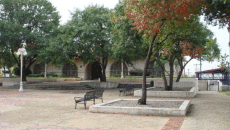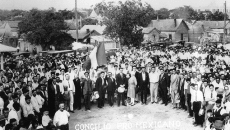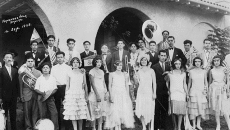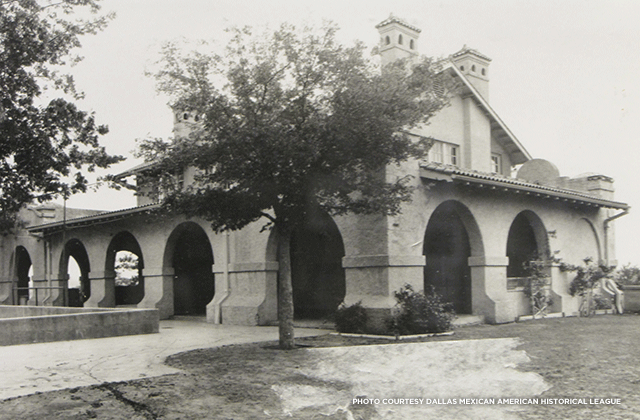By Geoff Montes
PreservationNation
In Dallas, the ethnic enclave once known as Little Mexico has undergone a rapid shift in the 21st century. The nearby American Airlines Center — home of the Dallas Mavericks — opened in 2001, ushering in an era of change; real estate developers gobbled up what was left of the single-family housing stock and began erecting market-rate condominiums and office towers.
Real estate agents have sleekly rebranded the neighborhood as “Uptown,” a rare walkable area in the auto-centric city. But the hundred-year-old Pike Park — a four-acre green space tucked away in the neighborhood’s southwest corner — remains as a relic of an era long gone.
Pike Park was established in 1914 when the neighborhood was predominantly inhabited by Jewish immigrants. Originally named Summit Play Park due to its location atop a chalky hill, the park was the first one established by adopting the Kessler Report, an innovative park design program aimed at tailoring parks to meet the recreational needs of an established community. The park contained a wading pool, tennis courts, and playground, along with a spacious Spanish Colonial community center containing shower baths, reading rooms, and an assembly hall.

The neighborhood’s demographic shift from predominantly Jewish to Mexican began during the Mexican Revolution, which lasted from 1910 to 1920. During that period, Mexicans fled the political instability of their home country in favor of Dallas’ burgeoning economy.
The neighborhood’s ten square blocks had an estimated 7,000 to 10,000 Mexicans by 1920. In 1931, Pike Park was the first in Dallas to establish joint-use rules for whites and Hispanics, a significant milestone for the city’s integration efforts.
The following years saw Pike Park develop into the central gathering place for the surrounding community. Albert Valtierra, president of the Dallas Mexican American Historical League (DMAHL), says the park was “the cultural heart of the Mexican American community,” playing host to legendary Cinco de Mayo and Mexican Independence Day celebrations, as well as quinceañeras.
However, as Mexicans started leaving the neighborhood, such large celebrations moved to more prominent areas and the park began showing signs of its age.
Last year, Pike Park — which was named a Dallas city landmark in 2000 — underwent a six-month, $650,000 renovation, restoring the gazebo, plaza, lighting fixtures, and entrance gates. A large ceremony commemorating the reopening was held in November 2013.

Although funding for the renovation largely came from 2006 bond funds, there was not enough money to touch the recreation center, which has gone though a series of modifications throughout its history, including the removal of its upper floor. The building currently sits vacant and closed to the public.
Valtierra says one of DMAHL’s top priorities is advocating the city to renovate the deteriorating building. They have also reached out to the park’s corporate neighbors, including Mark Cuban, owner of the Dallas Mavericks. Cuban recently spent $1.5 million to open a small baseball field adjacent to Pike Park that hosts Little League games.
As for the aging recreation center, Valtierra says, “It is a symbolic location for the community,” adding that the possible future uses of the space are endless. One possibility is turning it into a community center that has cultural exhibitions and movie nights. Another is to house DMAHL’s administrative offices and the group’s public programs.
Valtierra says that even though Dallas’ Mexican-American community has largely moved elsewhere, the inherent value in renovating the recreation center remains.
“There are still people in the neighborhood, even though the makeup is different,” he says. “Why can’t we program activities for the people that live there?”

An example of a popular public program emerged earlier this year, after a partnership formed between the DMAHL, the Dallas Jewish Historical Society, and the Latino Cultural Center to honor the neighborhood’s rich cultural history.
The groups put together a multi-media exhibition called “Little Jerusalem to Little Mexico: 100 Years of Settlement,” which depicted the changes the neighborhood underwent in the early 20th century. It was a huge hit with visitors, and demonstrates that there is clearly an audience for the type of programing DMAHL hopes to offer in the future.
The National Trust for Historic Preservation works to save America’s historic places. Join us today to help protect the places that matter to you.
Geoff Montes is the Editorial Assistant for Preservation magazine. He enjoys Art Deco architecture, any activity that can be done at the beach, and cotton candy.



